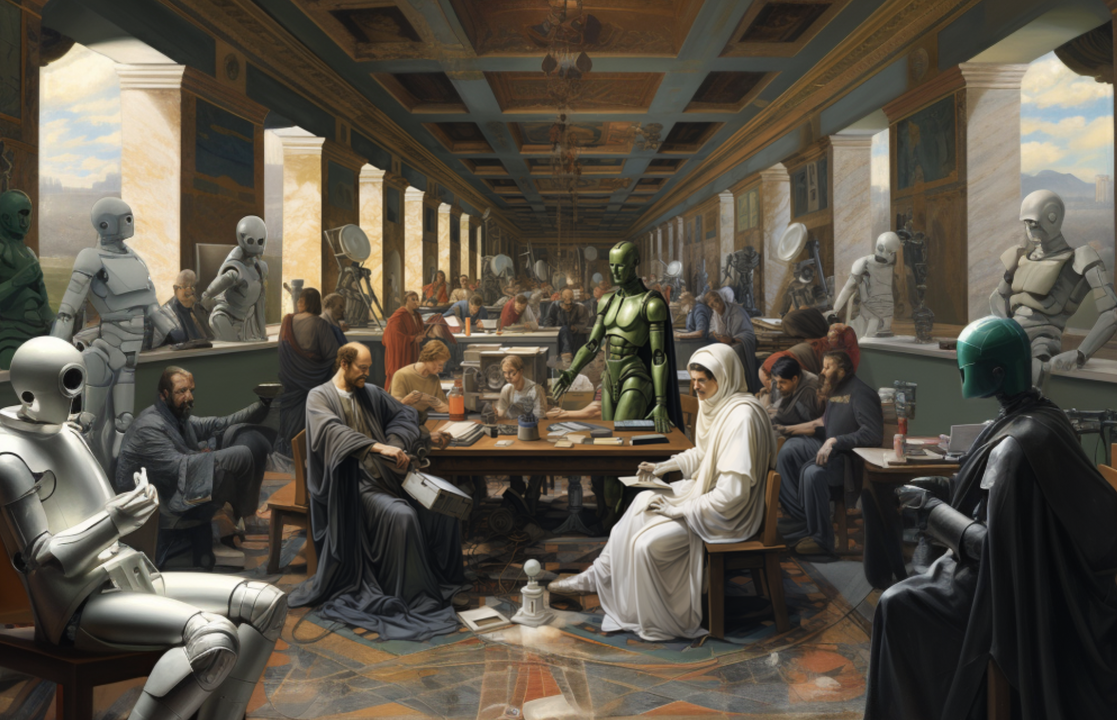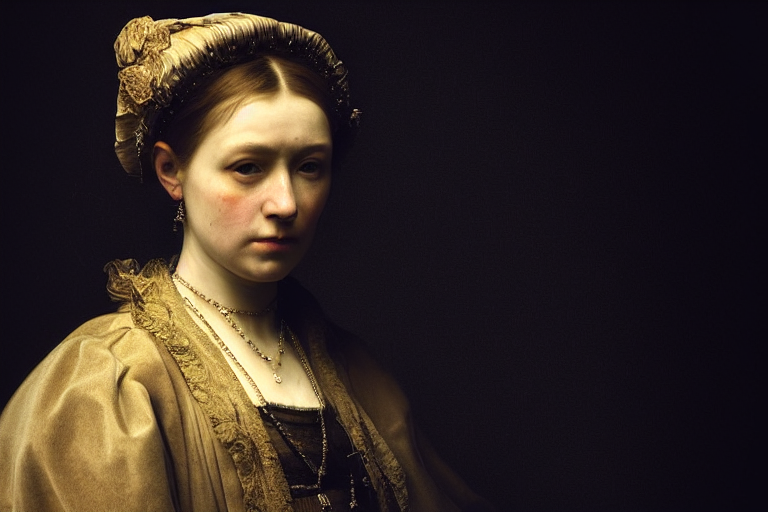The Renaissance was a period of profound rediscovery. Artists and thinkers looked back to the classical world, not to merely copy it, but to learn from it, build upon it, and ultimately, to forge a new future. Today, we stand at the precipice of a new renaissance, one driven not by chisel and brush, but by algorithm and data. This AI Renaissance is once again turning our gaze to the past, using the most advanced technology of our time to connect with history in ways we never thought possible.
We are no longer just passive observers of history, peering at faded portraits behind velvet ropes. We are becoming active participants in its revival. Through the power of artificial intelligence, we are restoring lost masterpieces, giving voice to silent figures, and creating a breathtaking collision of history and modernity. The result is a vibrant, dynamic, and sometimes controversial dialogue with the ghosts of our past. What happens when a 16th-century monarch is reimagined for a 21st-century audience? The answer is redefining our relationship with art, culture, and truth itself.
Digital Alchemy: Restoring the Canvases of the Past
For centuries, the work of a historical conservator has been one of painstaking, delicate precision. Armed with solvents, scalpels, and immense knowledge, they fight a constant battle against the ravages of time—cracks, fading pigments, water damage, and layers of obscuring varnish. This process is slow, incredibly expensive, and always carries the risk of altering the artist's original intent.
Enter the world of ai art restoration. This isn't about applying a simple Instagram filter. This is about training sophisticated AI models on millions of images, teaching them the specific styles of different artists and periods. An ai image generator can analyze a damaged fresco or a cracked oil painting and make highly educated predictions about what the missing or faded sections should look like. It understands the unique brushstrokes of Rembrandt, the soft gradients of Da Vinci, and the bold colors of Titian.
The AI can digitally "in-paint" cracks with textures that match the surrounding canvas. It can algorithmically reverse the chemical yellowing of varnish to reveal the artist’s original, vibrant color palette. This process allows us to see masterpieces as they were meant to be seen, with a clarity that has been lost for generations. The result is more than just restoration; it’s a resurrection.
Giving Life to the Silent: From Static Portraits to Living Beings
Restoration is only the first step. The truly revolutionary leap is animation. A portrait, by its very nature, is a single frozen moment in time. But what if it didn't have to be? What if we could see the subtle flicker in Queen Elizabeth I’s eyes, a thoughtful frown from Shakespeare, or a knowing smile from the Mona Lisa?
This is no longer science fiction. By feeding a high-resolution, restored portrait into an AI model, we can bring these figures to life. The AI analyzes the 2D image, infers the underlying 3D facial structure, and can then generate realistic, subtle movements: a blink, a slight turn of the head, a change in expression. The arrival of powerful multimodal models like GPT-4o has accelerated this capability immensely. Because GPT-4o can process text, audio, and images in tandem, it can interpret a prompt like "make this portrait look pensive" and translate that abstract concept into a nuanced facial animation with an unprecedented level of contextual understanding.
This technology creates an unprecedented intimacy with history. Suddenly, these are not just flat representations; they feel like people. We can imagine them breathing, thinking, and reacting. It’s a powerful tool for empathy, allowing us to connect with historical figures on a human level that a textbook could never achieve.

The Great Collision: When Caesar Orders a Latte
Once you can restore a portrait and animate it, the next logical step for the creative mind is to move it. This is where the true "collision" occurs, where history is plucked from its frame and dropped squarely into the modern world. What would Joan of Arc look like waiting for the subway? How would Julius Caesar compose a business email on a laptop?
This playful yet profound form of ai design is made possible by advanced ai image edit capabilities. The process involves compositing—taking the restored historical figure and placing them into a modern photograph. The challenge is to make it look real. Early attempts at this often looked like clumsy cut-and-paste jobs. But today's tools are far more sophisticated.
An artist using a platform like freebeat.ai can leverage powerful, specialized models to achieve seamless integration. A model such as Flux kontext Pro is a master of context. It doesn't just paste one image onto another; it analyzes the lighting, shadows, color grading, and even the grain of the target photograph. It then adapts the historical portrait to match that environment perfectly, making it appear as though the figure was genuinely there when the photo was taken. The result is a stunning, often humorous, and always thought-provoking piece of ai art that forces us to see both the past and the present in a new light. This isn't just a gimmick; it's a new form of commentary and ai content creation, creating powerful visual narratives that can go viral in an instant.
The Promise and Peril of the AI Renaissance
This new era, like the original Renaissance, is filled with both incredible promise and significant ethical questions. We are wielding a power that demands careful consideration.
The Promise:
Democratization of History: This technology takes history out of the exclusive hands of academics and museums and gives it to the people. A student can create a video of Plato explaining his philosophy, making learning more engaging and memorable.
A New Frontier for Art: For artists, this is an entirely new medium. It allows for the ultimate remix culture, where the entire catalog of human history becomes a palette for new creations, commentaries, and explorations of the human condition.
Enhanced Empathy and Connection: By seeing historical figures as living, breathing people, we can better understand their motivations, struggles, and triumphs, fostering a deeper connection to our collective past.
The Peril:
The Question of Authenticity: Where do we draw the line between restoration and fabrication? By animating a portrait, are we putting our own modern interpretations onto a historical figure? We risk creating historical deepfakes, where the animation doesn't reflect the person but rather our own biases about them.
Disrespecting the Original: Is it ethical to alter a masterpiece? An artist made a specific set of choices when creating a work. By changing it, even with the best intentions, we may be fundamentally disrespecting their original vision and the historical integrity of the artwork.
The Potential for Misinformation: The same technology that can create an engaging educational video can also be used to create convincing but utterly false historical narratives. Imagine a fabricated video of a famous leader saying something they never said, used to push a political agenda. The line between reimagined history and fake history is dangerously thin.

The Future: An AI Agent as Your Personal Historian
So where does this all lead? The ultimate evolution of this technology lies in the concept of the ai agent. This isn't just a tool that responds to one command at a time; it's an autonomous system capable of understanding a complex goal and executing a multi-step project.
Imagine tasking an ai agent with a goal: "Create an immersive documentary about the court of Henry VIII." This future agent would:
Scan historical archives for all known portraits of the key figures.
Use an ai image generator and restoration models to clean and enhance these portraits to photorealistic quality.
Animate the figures, using historical texts to inform their likely expressions and mannerisms.
Generate ai content by writing a script in the language and style of the Tudor period.
Use ai design principles to construct a virtual 3D model of Hampton Court Palace for the figures to inhabit.
The end result would be a fully realized, interactive historical experience, created in a fraction of the time and cost of a traditional film production. This ai agent becomes a collaborator, a researcher, and a creator all in one.
Conclusion: Navigating Our New Reality
We are living through a period of exhilarating change. The AI Renaissance is breaking down the walls between past and present, between art and technology, and between human and machine. It offers us a magical mirror in which we can see the faces of history looking back at us with newfound life.
However, like the patrons and artists of the first Renaissance, we have a profound responsibility. This power to reshape and reimagine our past requires a commitment to truth, a respect for authenticity, and a constant, critical dialogue about the ethical lines we are drawing. The collision of history and modernity is not a gentle one; it is explosive, creative, and full of potential. Our task is to channel that energy not toward distorting the past, but toward illuminating it for generations to come.


